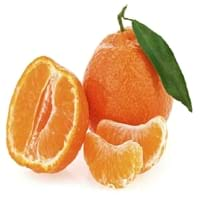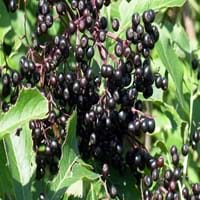Health Benefits
Cancer prevention, Heart care, Increases metabolic rate, Reduces stress
Cancer prevention, Heart care
General Benefits
Boosts immune system, Controls blood pressure, Digestive aid, Eye care, Helps in weight loss
Anti oxidant properties, Anti-inflammatory properties, Boosts immune system, Controls blood sugar levels, Cures fever, Digestive aid, Eye care, Fights against infections, Flu treatment, Helps in weight loss, Maintains healthy cholesterol level
Skin Benefits
Brightens and lightens complexion, Treatment of acne, Treatment of dark spots
Anti-aging benefits, Skin rejuvenation
Hair Benefits
Promotes longer and healthier hair, Protects hair
Promotes longer and healthier hair
Allergy Symptoms
Abdominal pains, Breathing difficulty, Coughing, Diarrhea, Drop in blood pressure, Fainting, Runny nose, Skin rash, Sneezing, Swelling of mouth, tongue or lips, Vomiting
Abdominal pains, Asthma, NA, Sneezing, Sore throat
Side Effects
Allergic reaction
Diarrhoea, Nausea, Vomiting
Lactating Women
No
Not Available
Best Time to Eat
As a snack in the late afternoon, Don't consume at night and before bed, Eat the fresh ones, avoid mixing with any other foods, don't eat after meal., Morning time (before lunch)
As a snack in the late afternoon, Don't consume at night and before bed, Eat the fresh ones, avoid mixing with any other foods, don't eat after meal., Morning time (before lunch)
Vitamin A (Retinol)
Not Available
Vitamin B5 (Pantothenic Acid)
Vitamin C (Ascorbic Acid)
Vitamin E (Tocopherole)
Not Available
Vitamin K (Phyllochinone)
Not Available
Calories in Fresh Fruit with Peel
Not Available
Calories in Fresh Fruit without Peel
Not Available
Calories in Frozen Form
Not Available
Not Available
Calories in Dried Form
Not Available
Calories in Canned Form
Not Available
Not Available
Varieties
Clemenules or Nules and Nadorcott
Adams, Black Beauty, Black Lace, Johns, Nova, Variegated and York
Inside Color
Orange
Magenta
Taste
Sweet, Tangy, Tart
Juicy, Sweet
Soil Type
Loam, Sandy, Well-drained
Sandy, Well-drained
Climatic Conditions
Warm to hot climate
Warm to hot climate
Facts about
- Clementine was first grown at the citrus research center in USA in 1909.
- It is called as"Christmas orange" as it's limited growing season falls during winter.
- It's a hybrid between Mediterranean and Oranges.
- According to a superstitious belief, the "elder tree" was supposed to ward off evil influence & give protection from witches.
- Branches from its tree are also used to make fujara, koncovka & other Slovakian flutes.
Top Producer
Spain
United States of America
Other Countries
Argentina, Brazil, Egypt, Italy, Japan, Morocco, Turkey, United States of America
Colombia, India, Mexico
Top Importer
United States of America
Not Available
Top Exporter
Spain
Not Available
Botanical Name
Citrus clementina
Sambucus nigra
Synonym
Not Available
Not Available
Subkingdom
Tracheobionta
Tracheobionta
Division
Magnoliophyta
Magnoliophyta
Class
Magnoliopsida
Magnoliopsida
Subclass
Rosidae
Asteridae
Order
Sapindales
Dipsacales
Family
Rutaceae
Adoxaceae
Species
C. clementina
S. nigra
Generic Group
Citrus fruit
Moschatel
Difference Between Clementine and Elderberry
We might think that Clementine and Elderberry are similar with respect to nutritional value and health benefits. But the nutrient content of both fruits is different. Clementine and Elderberry Facts such as their taste, shape, color, and size are also distinct. The difference between Clementine and Elderberry is explained here.
The amount of calories in 100 gm of fresh Clementine and Elderberry with peel is Not Available and 73.00 kcal and the amount of calories without peel is 47.00 kcal and Not Available respectively. Thus, Clementine and Elderberry belong to and category.These fruits might or might not differ with respect to their scientific classification. The order of Clementine and Elderberry is Sapindales and Dipsacales respectively. Clementine belongs to Rutaceae family and Elderberry belongs to Adoxaceae family. Clementine belongs to Citrus genus of C. clementina species and Elderberry belongs to Sambucus genus of S. nigra species. Beings plants, both fruits belong to Plantae Kingdom.









